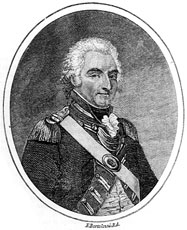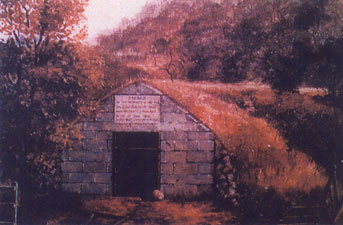In 1782 Johnson was appointed a Brigadier-General as well as Inspector-General of the Six Nations (Iroquois). Indeed, for the rest of his days, he actively championed Indian and Loyalist rights, while the creation of Upper Canada (the future Ontario) owed much to his influence. The greatest disappointment of his life was the failure of the government to make him Lieutenant-Governor of the new province. A second brief residence in London convinced Johnson that he could not make a career there, and in 1796 he moved to Montreal, where he resumed his duties as head of the “Indian Department”. In that capacity, his principal concern had always been protection of the interests of the First Nations, and in 1820, a decade before his death, he insisted that the policy of giving presents to the native peoples be continued. Throughout his life, Johnson acquired an enormous amount of property, having holdings in boh Upper and Lower Canada; yet he always regretted the exile from the Mohawk Valley. He died in Montreal in 1830, the funeral being attended by 300 Mohawks.
|
Editorial Note: Sir John Johnson, together with his wife, Polly Watts, and several of their children, were buried in a family burial vault on the slopes Mont Saint-Grégoire (formerly called “Mount Johnson”), near Montreal. Although the vault was ploughed underground during landscaping work on the slope in the 1950’s, efforts are now being made, by a non-profit corporation acting jointly with governments and the Sir John Johnson Centennial Branch of The United Empire Loyalists’ Association of Canada, to restore the vault and make the area around it an historic site, commemorating a key figure in Loyalist, Quebec and Canadian history.
For further information see: Earle Thomas, Sir John Johnson: Loyalist
Baronet (Toronto: Dundurn Press, 1986)
By Prof. Hereward Senior,
Department of History, McGill University
Honorary Vice-President, UELAC

